Cooper’s follies
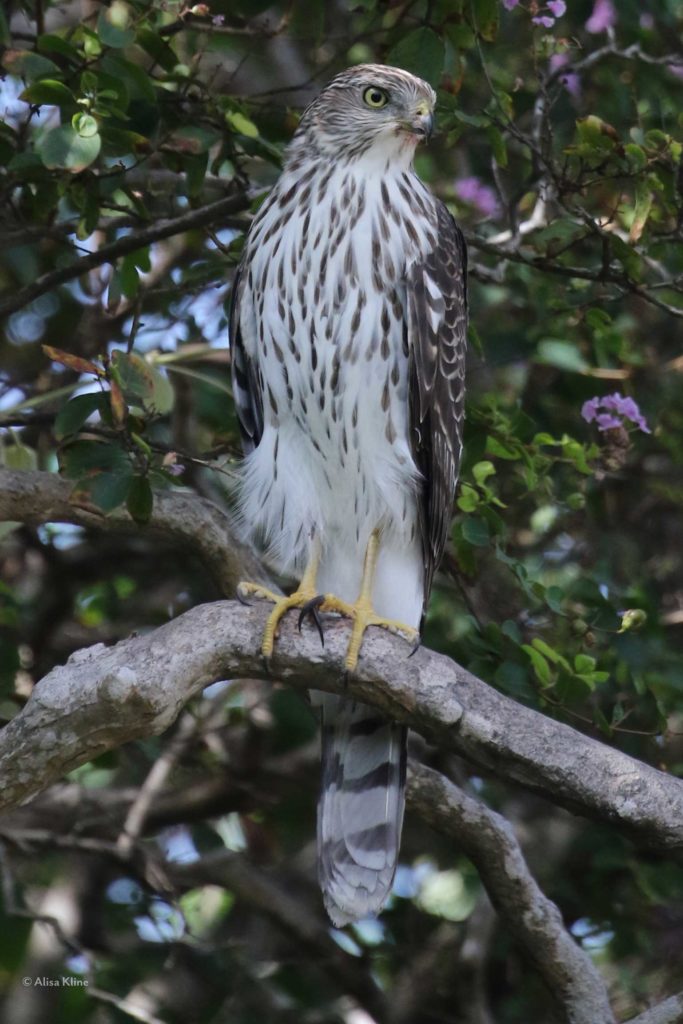
This is the season for juvenile Cooper’s hawks to entertain everyone as they struggle up the learning curve.
Cooper’s hawks are about the size of a crow. In their juvenile plumage, which is mostly what we have right now, they are a mass of brown streaks and yellow legs and look more or less like every other juvenile hawk in Houston. This makes it a challenging ID among those of us who might care.
I am going to reveal the secret to knowing whether the hawk you are looking at is a Cooper’s or not. I wish I knew this two years ago, as I will relate below. A juvenile Cooper’s hawk has a piercing stare with vivid, icy yellow eyes. Other juvenile hawks have greyish eyes that don’t startle you when you encounter them.
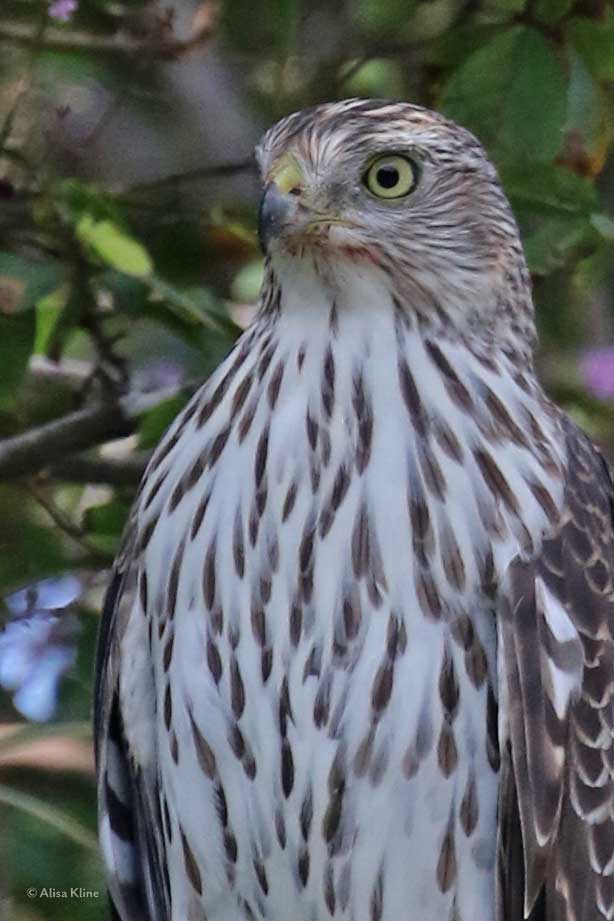
You can see from the flecks of blood near the mouth that this bird has had some success recently.
Cooper’s are massively more common in Houston during the fall and winter. During the cooler months, they are the hawk I see most often in town. It’s possible some stay here year-round, but we are technically just south of their breeding range. During the breeding season (roughly March through July), we don’t see a lot of Cooper’s, but they started pouring during September. I have answered three hawk ID questions in the last couple of weeks and all of them were Cooper’s, and as you will see, I have had more than a couple on the small, private nature preserve that I manage near the Park.
Every Cooper’s I’ve seen this month and everyone that was sent to me for ID were juveniles. By my own observations, it’s always the kids arriving first.
It’s likely that all these juveniles are from the breeding grounds in central and north Texas. A typical Cooper’s pair will lay five eggs. Once the young can fly (at about a month), the parents will feed them for another two months. After that, they are on their own and have to actually hunt.
The reason they seem to appear in bunches might be that the brood stays together for a while after they are independent. They will hunt together and sleep together. They will not, however, share food. It’s each bird for him or herself and watching them figure out how to hawk can be comical.
We will start to get adult Cooper’s hawks later in the year. They are not this crop of juveniles grown up. More likely, they are part of a migrating population that lives up near Canada. Migrating seems to be optional for this bird. Some do, some don’t.
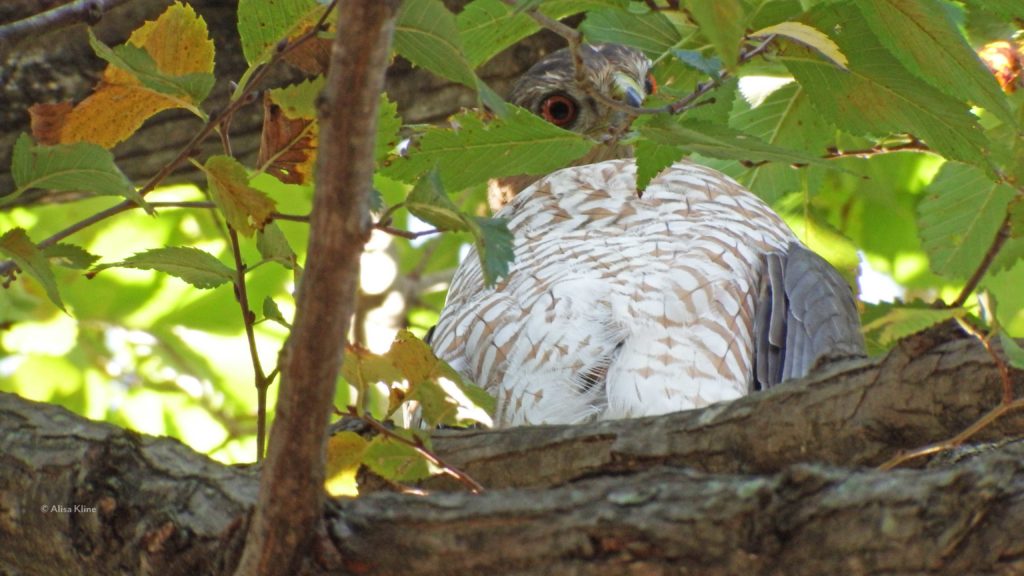
As adults, Cooper’s hawks lose the startling yellow as their eyes become an intriguing red. You can see both of this gal’s eyes as she stares down at you.
I can see how Houston is a good place for a young Cooper’s to learn his craft. Cooper’s hawks eat mostly other birds and many of us deploy a device that rounds up small birds up and feeds them to hawks. We call it a bird feeder. And it is. Except occasionally, you are going to feed a much bigger bird than you anticipated.
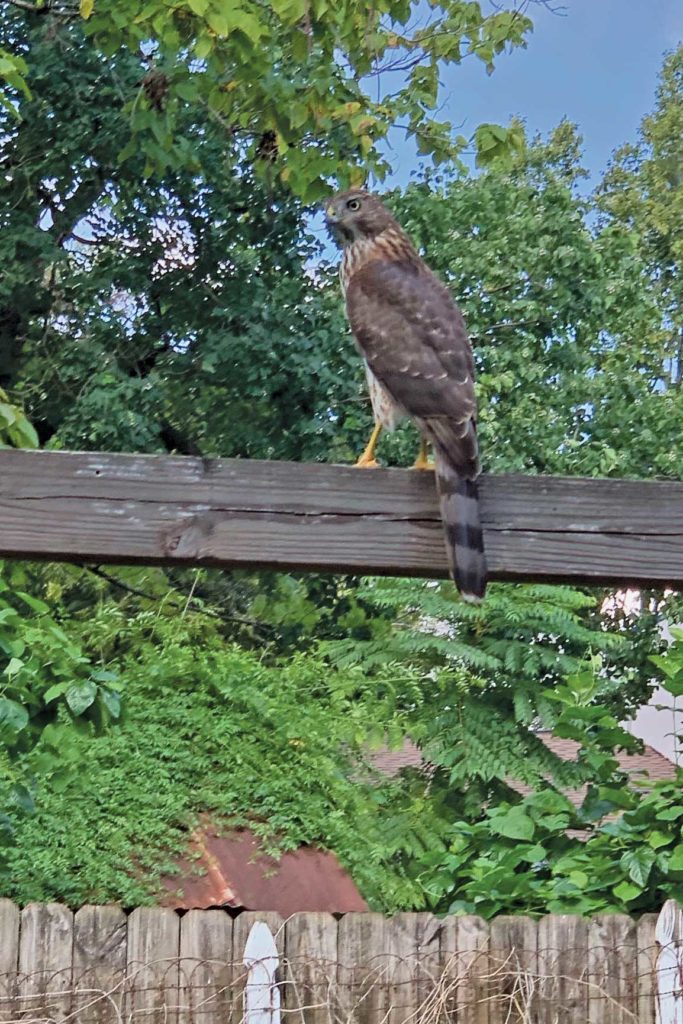
About a month ago, this juvenile Cooper’s perched on a 4×4, surveying the bird feeder behind the fence.
We also have an indigenous species that likes to congregate in large numbers and are apparently quite tasty if you’re a hawk. They are pigeons.
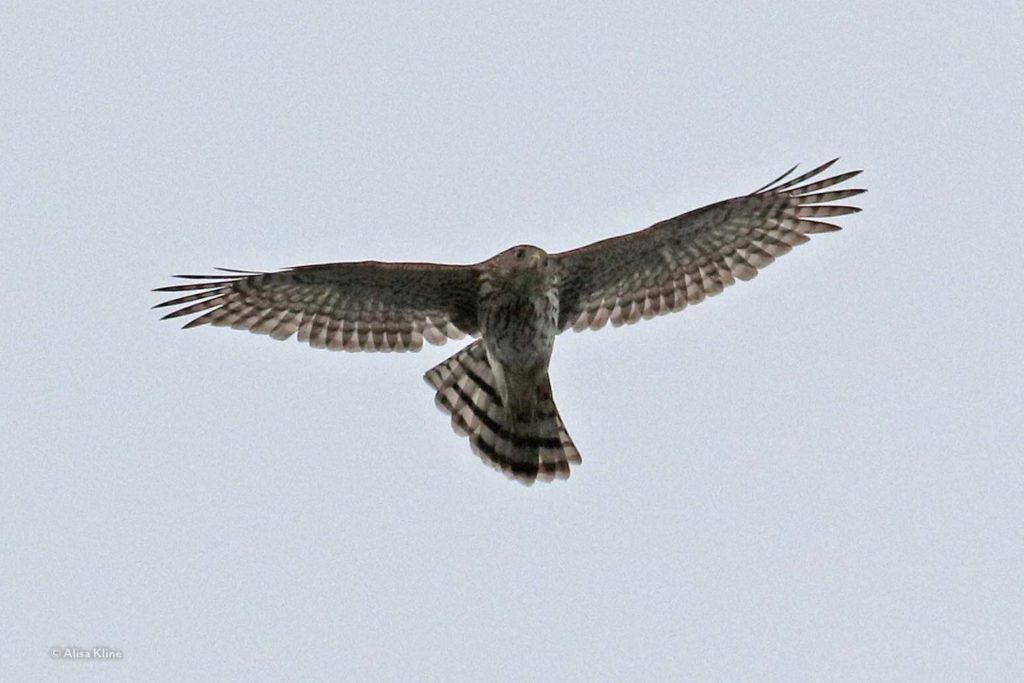
This juvenile Cooper’s hawk was chasing the flock of pigeons below earlier this week.
When you see a large flock of pigeons swirling in formation, look towards the periphery and see if you can’t spot a hawk. She’s often there, not too much bigger than the pigeons and not too differently shaped.
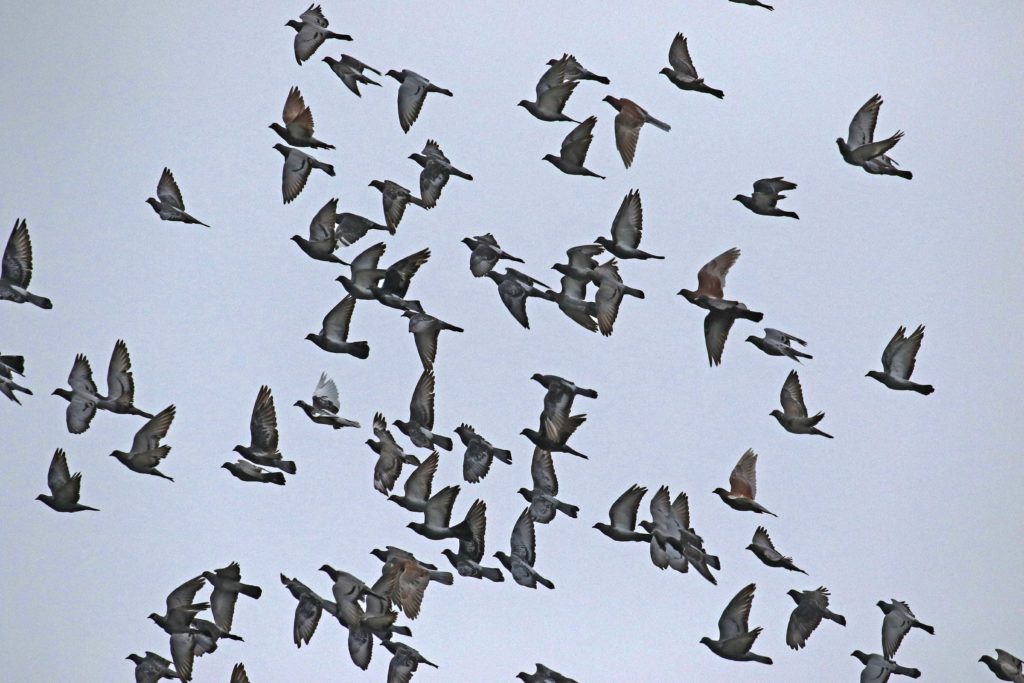
Cooper’s hawks are specialists in acrobatic flight and sudden bursts of speed. They are built for it with an extra-long tail to facilitate sharp turns.
About a week ago, I was standing at the back door when a commotion boiled towards me, chickens running, Cooper’s flying inches off the ground, more chickens in pursuit, all heading pell-mell towards the back door. As they reached the steps, the chickens in the front dodged left, the hawk managed to miss the steps as he, too made the turn veering left at the last moment and it was over.

The hawk flew towards the building below the shrubbery, banking left at the very last moment. The chickens in pursuit were somewhat impressed.
Cooper’s are sometimes called chicken hawks, but this encounter seemed more Keystone cops than perils of Pauline. This is often the case with juvenile Cooper’s hawks and that’s what makes them so entertaining.
A hawk has two problems if it wants to eat, the first is catching something and the second is immobilizing it so it can be eaten. A pigeon weighs from a half to three-quarters of a pound. A Cooper’s hawk weighs just over a pound. This would be the equivalent of you taking down a good-sized German shepherd. Daunting.
I was lucky enough a few years ago to have my camera in my hand when a Cooper’s hawk tried to nab a grackle on foot. When I saw it, I misidentified that hawk as a red-shouldered, and wrote a blog post about it more or less pointing out what an idiotic red-shouldered hawk this was. I revisited the video this year and, with a horrifying jolt realized that this wasn’t a red-shouldered hawk, it was a Cooper’s. And the idiot was apparently me!
Red-shouldered hawks hunt differently from Cooper’s hawks. For one thing, they don’t usually take other birds. I have watched two broods of red-shouldered hawks being raised in the Park, and in both cases, every food item I could identify was a lizard. A red-shoulder will perch and watch for prey, quickly diving down to strike it. A Cooper’s usually catches birds on the wing, occasionally taking them on the ground, but usually after a swift pursuing flight. (See above, re chickens)
This was a semi-competent Cooper’s with a tough problem on his hands. The grackle was on the ground and the hawk should have swooped in and grabbed it on the go. Somehow, that didn’t work out and when I first saw them, the hawk was chasing the grackle around a tree on foot.
Eventually, the grackle played dead while an adult grackle overhead screamed and flew around. The hawk was trying to kill his breakfast while the breakfast’s mom played defense. A grackle is about the same threat to a Cooper’s as a mid-sized dog would be to you. You can probably deal with it, but you can also get hurt. And there are two of them.
In honor of Houston Bird Week and in honor of the multitude of juvi Cooper’s filling our city, I’d like to revisit that video. It is more a celebration of the grackle, who does escape, but it is fun to watch.
This is the ending, again, in slow motion.

